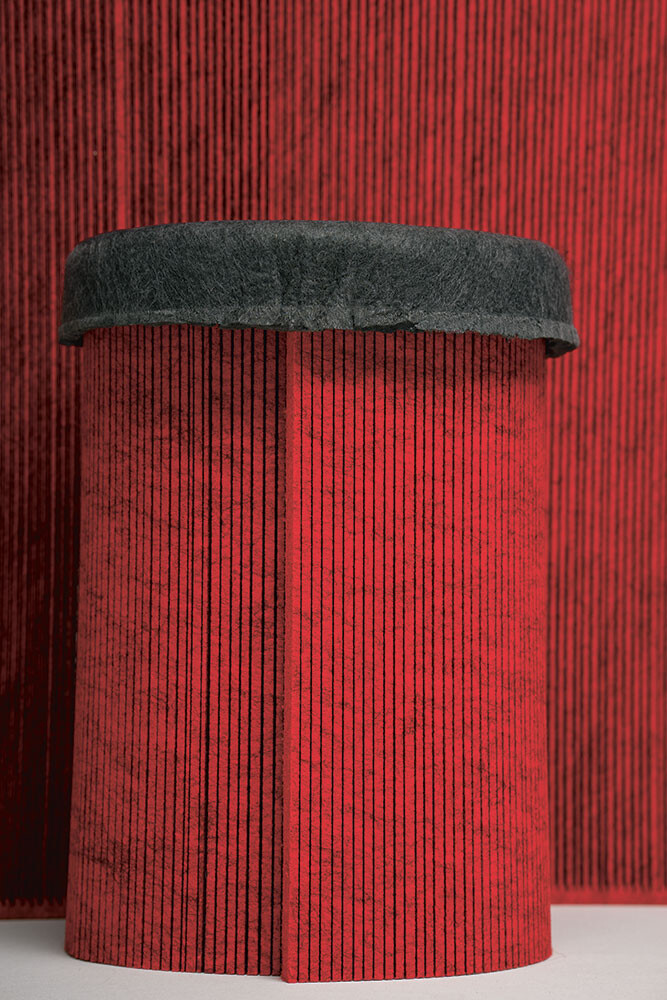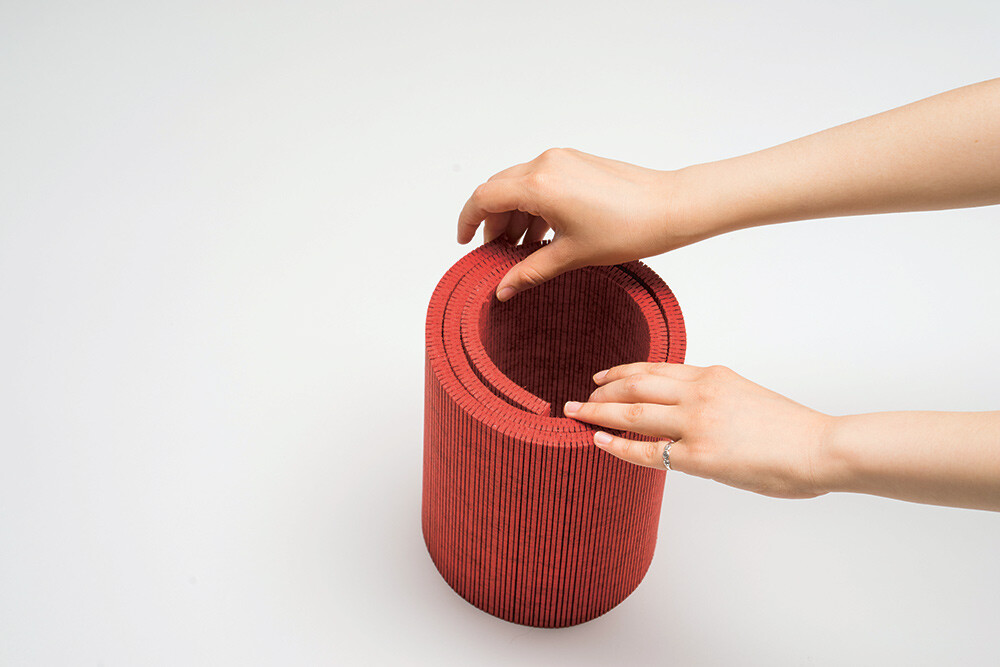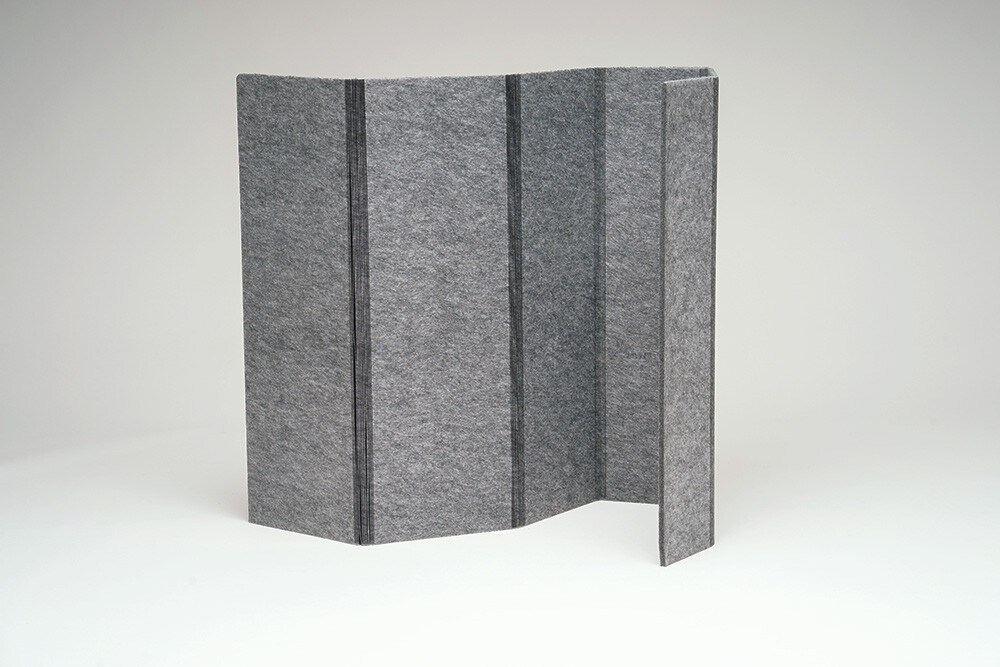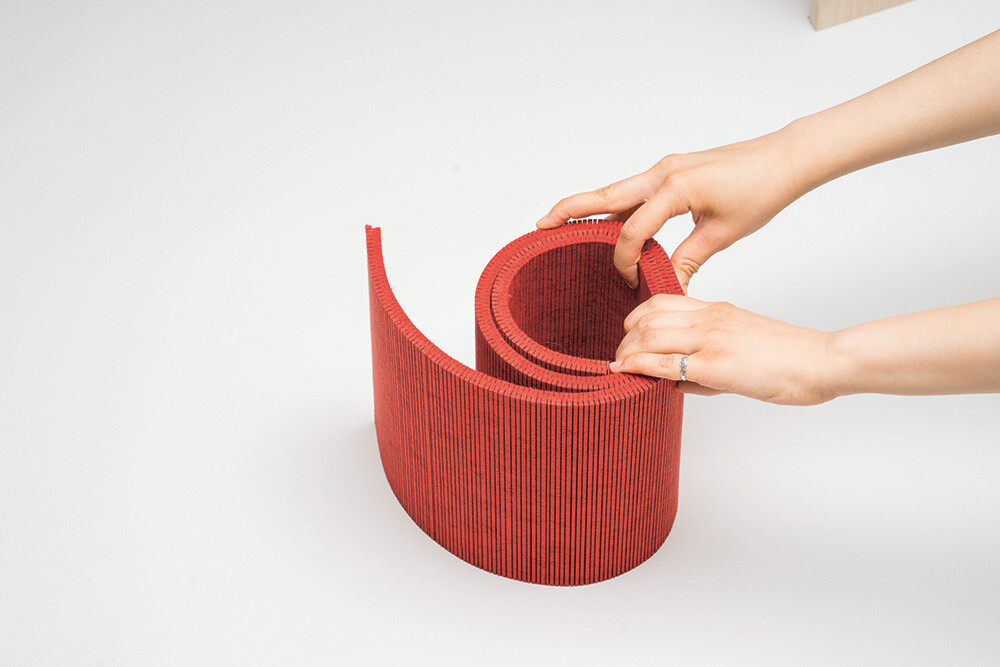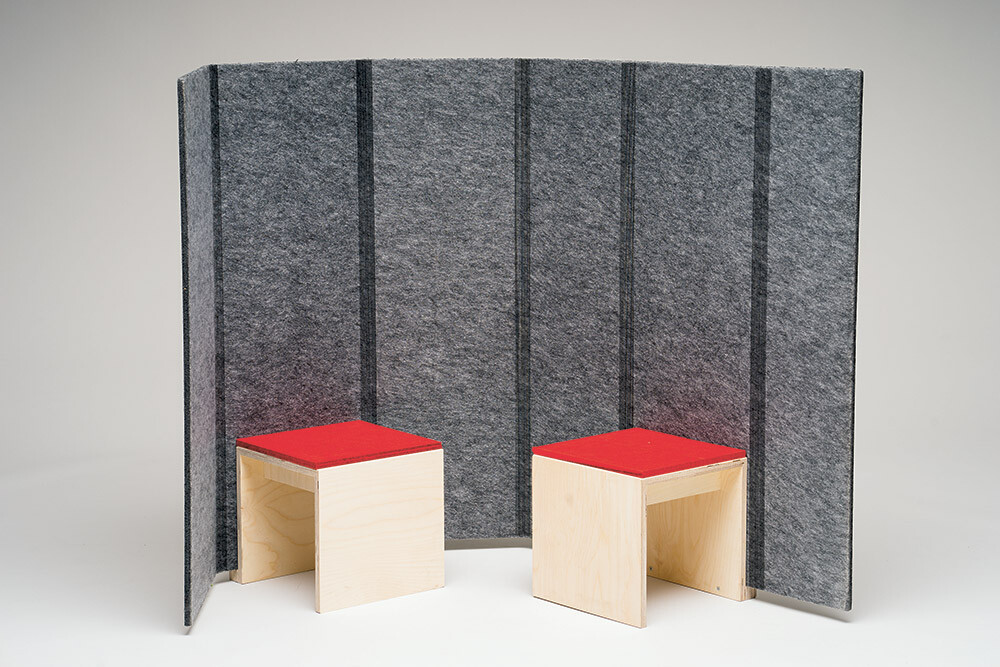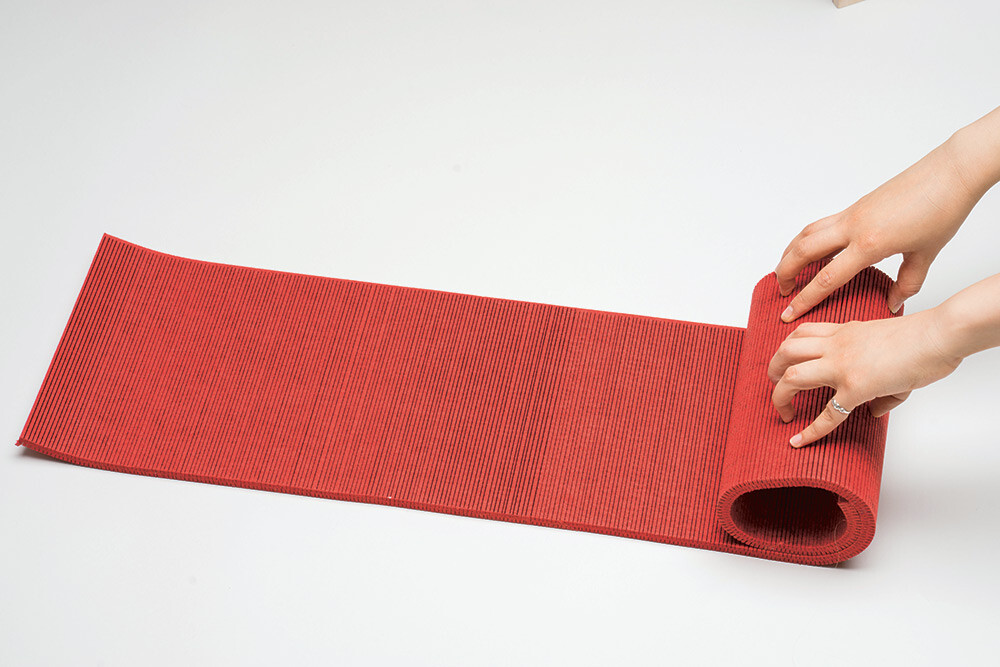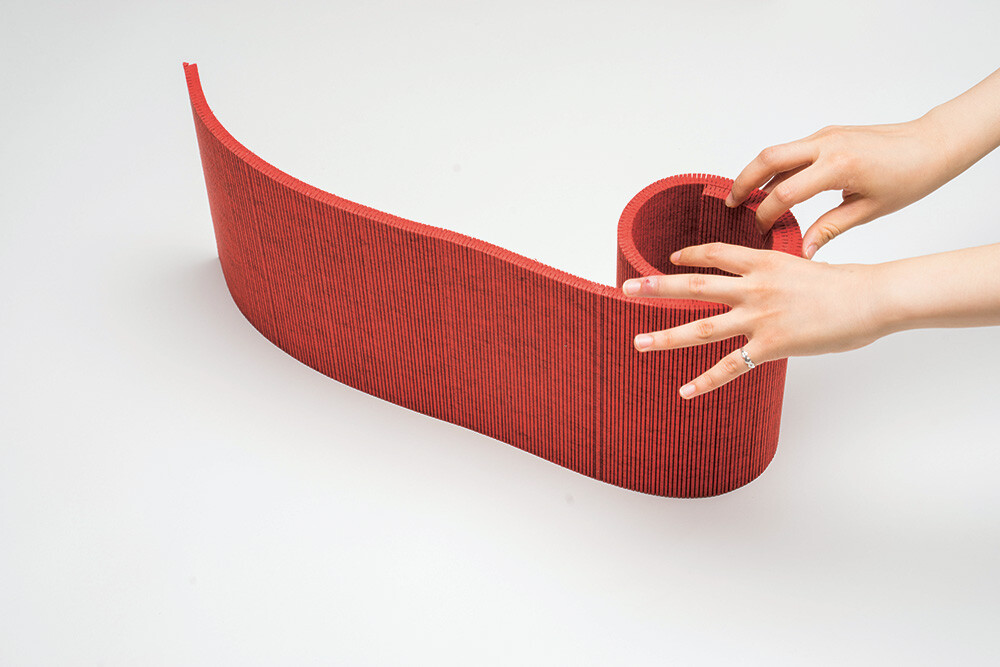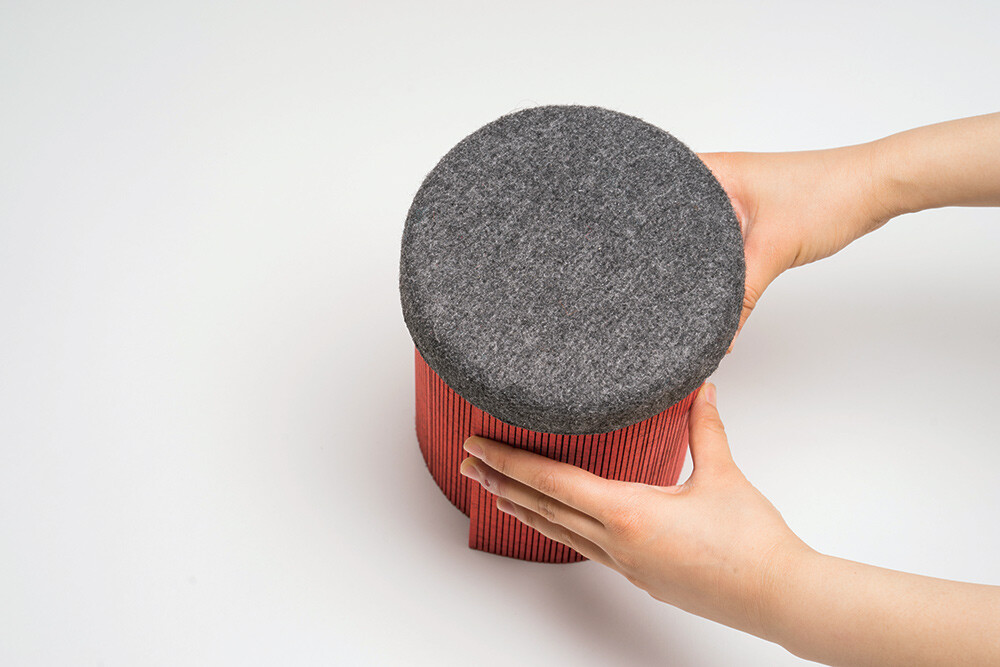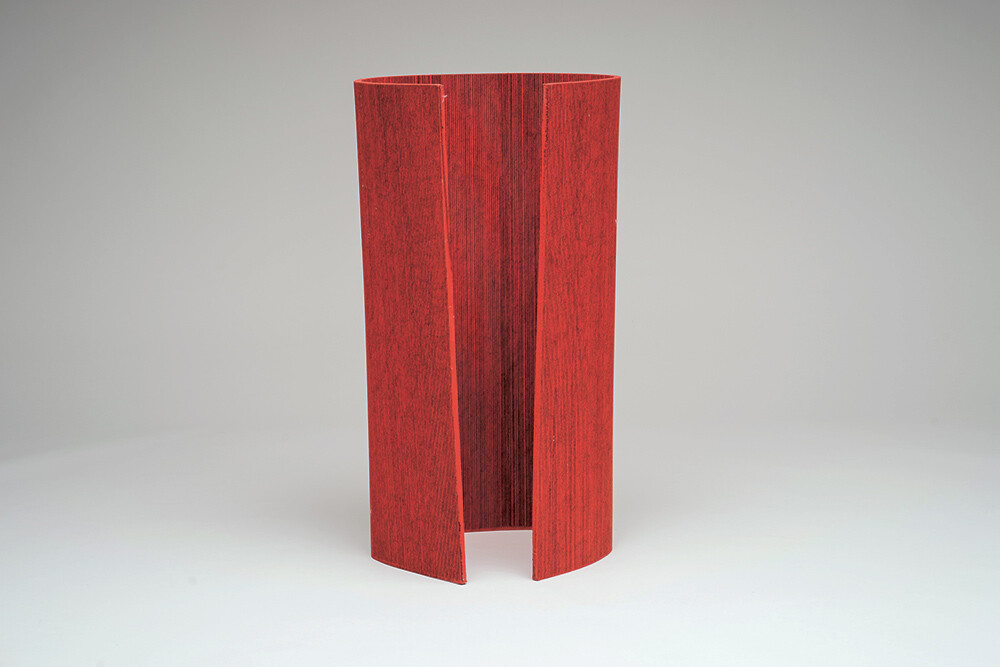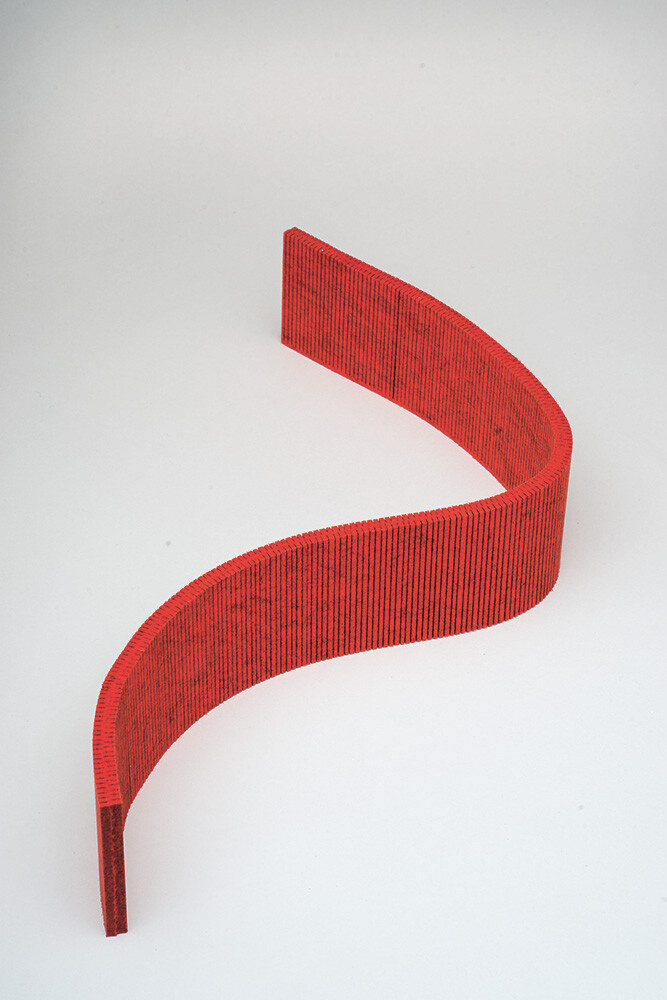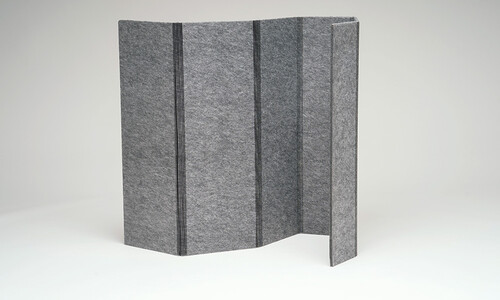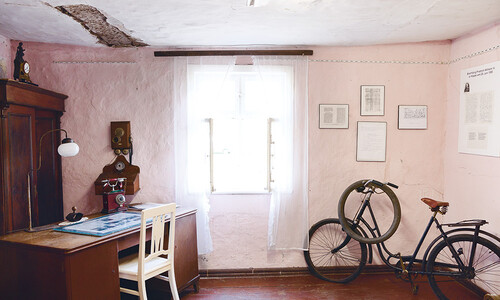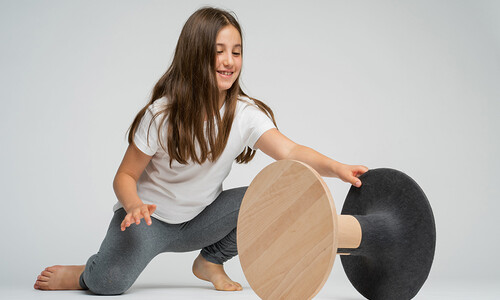Thermopressed felt: Although the panels are very rigid, their surface still retains a sense of the material’s original softness. The felt can also be transformed back into a flexible structure that remains stable—through partial cuts on the surface that form a line pattern. This technique, which opens up both visual and functional design possibilities, is central to this project. By making vertical, and sometimes horizontal, cuts, a rigid panel becomes a curved, three-dimensional object.
In this project, there are several variations: evenly spaced vertical lines create a homogeneous surface; vertical lines with varying spacing produce different degrees of flexibility; horizontal and vertical cuts evoke a grid-like pattern; some elements have cuts only in “joint areas” while other parts remain stiff.
Felt panels processed in this way are an optimal material for movable room dividers, allowing zones to be defined freely and flexibly. The system consists of modular components that can be combined. Walls can be extended with additional pieces or reinforced with seating elements that simultaneously increase stability. Fully enclosed spatial capsules can also be created. In addition, the felt modules provide acoustic insulation.
The wall elements were developed with the goal of giving the Montessori school’s learning family room a clearer structure while making it adaptable. Currently, the room layout offers little flexibility and no clearly defined zones for different activities and needs. In particular, the need for personal space is often neglected. Instead, all activities occur simultaneously, overlapping and preventing the emergence of a calm, focused atmosphere.
The room divider system I designed allows the large Montessori classrooms to be divided into organic units, creating secluded areas for both small groups and individual learners. For collaborative work and learning—especially in Montessori pedagogy—it is important to have the option to retreat and focus individually. At the same time, the system fosters a more coherent design of the learning environment, which can be continuously adapted by the students themselves through a collaborative process.
